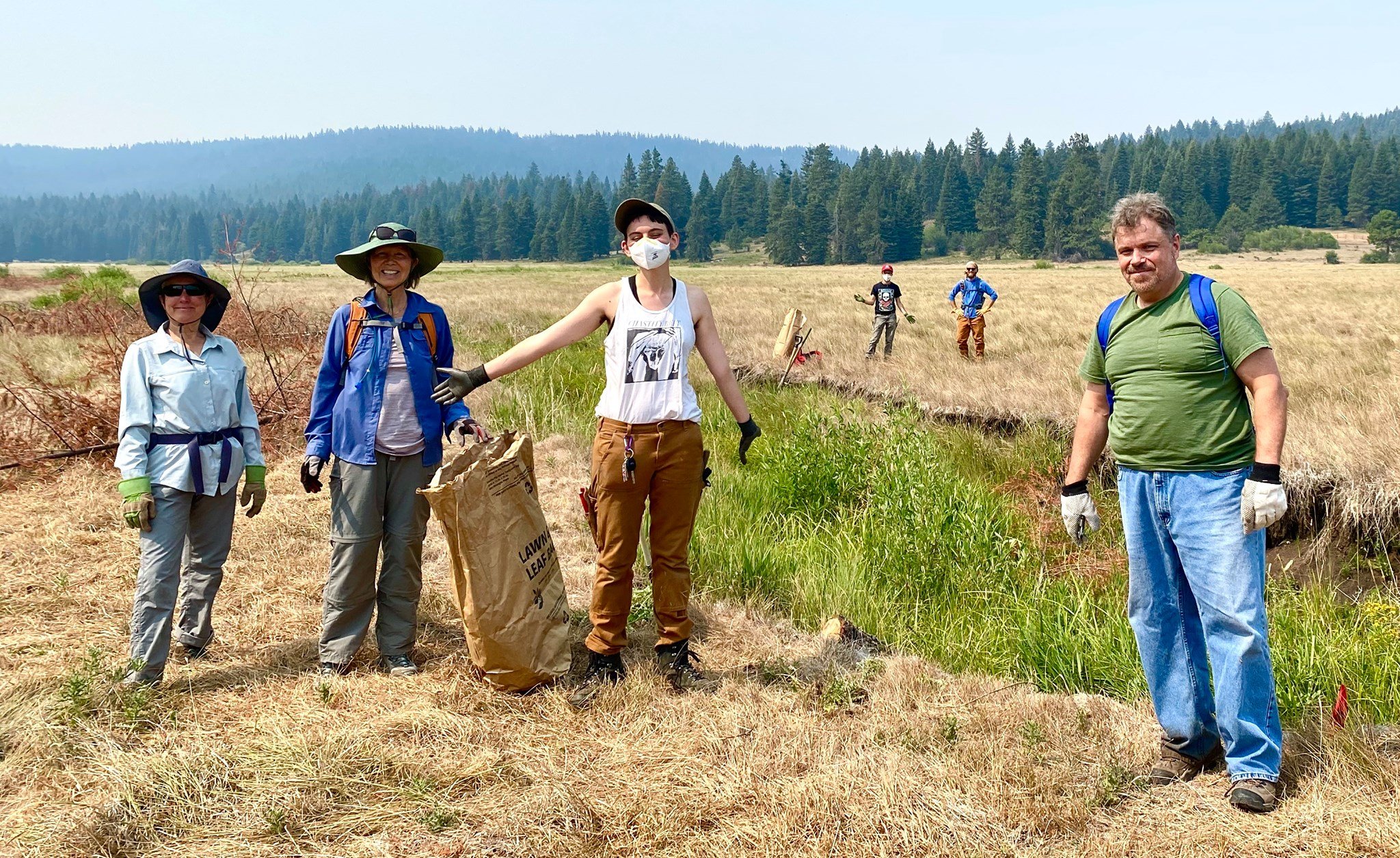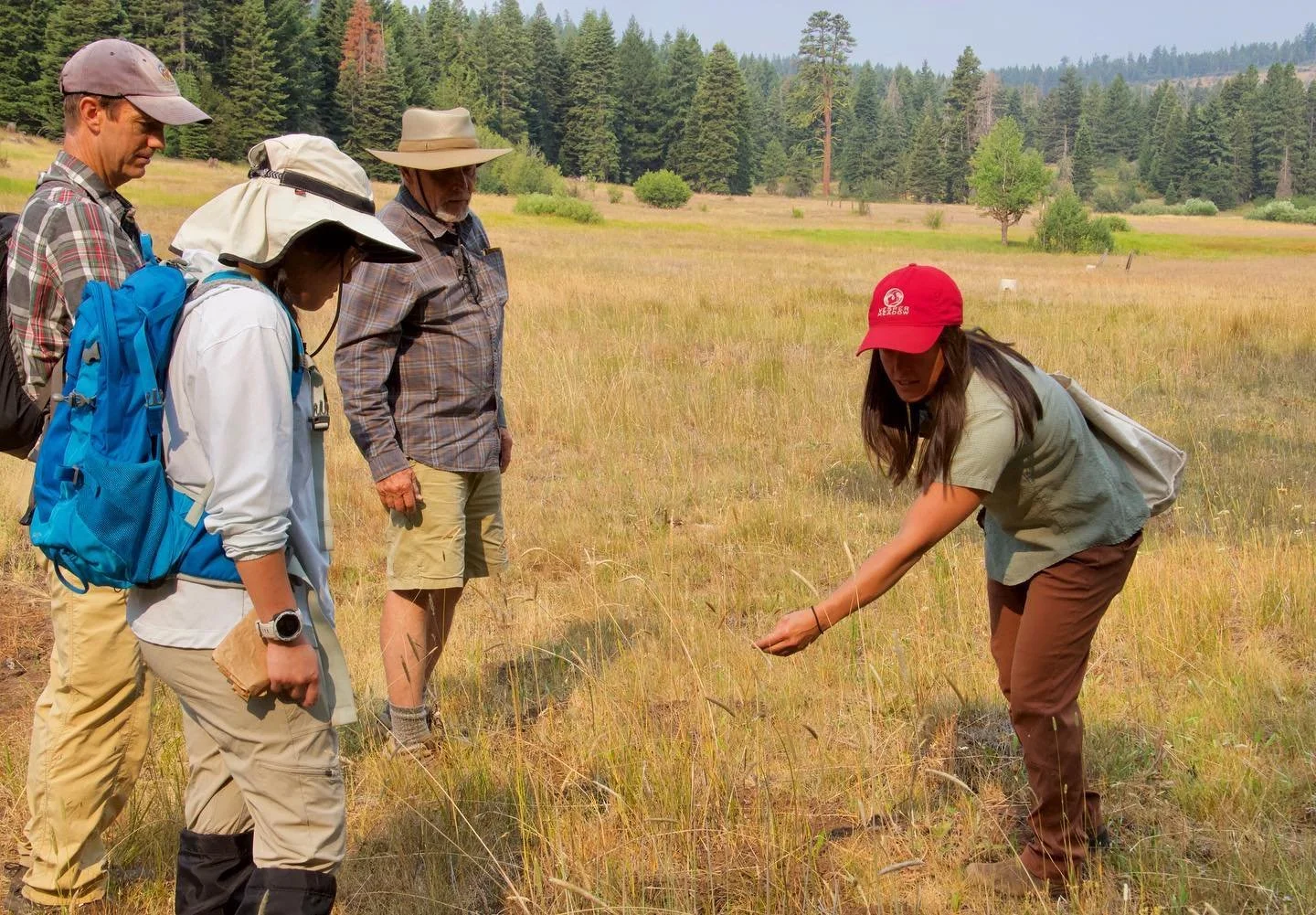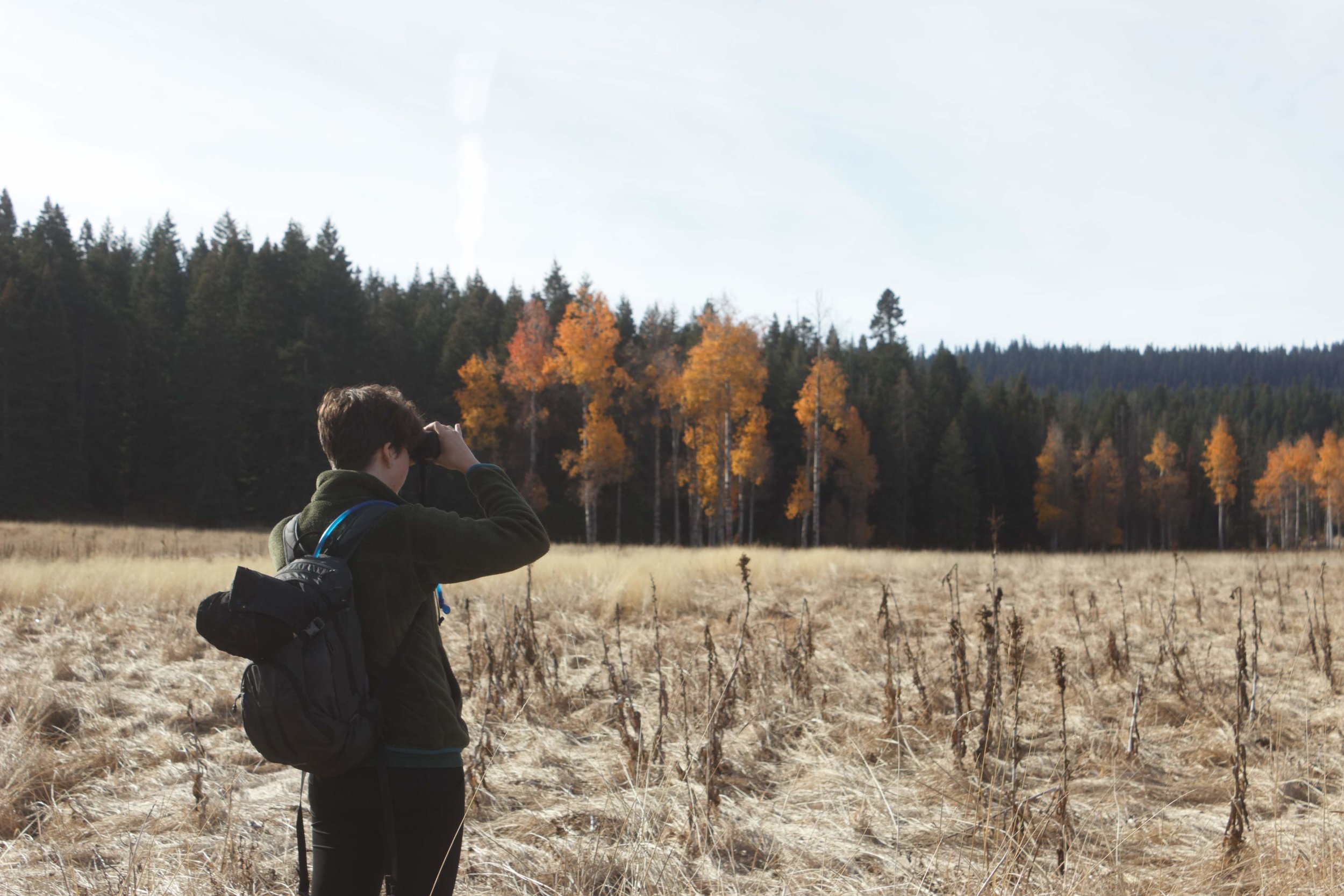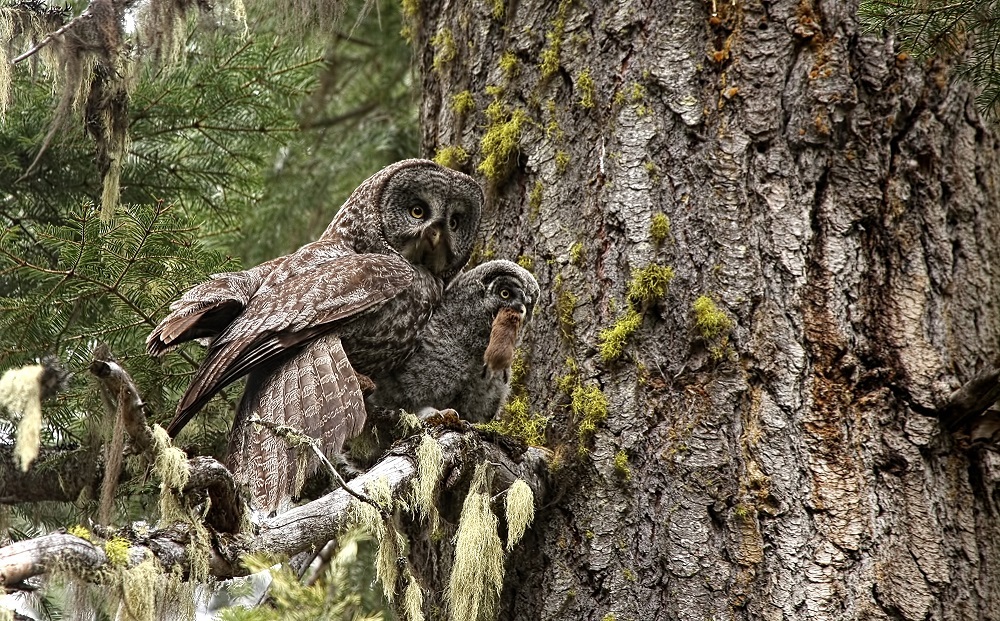Vesper Meadow Restoration Preserve
Our Primary Outpost
A Restoration and demonstration site for the Vesper Meadow Education program
The Vesper Meadows are two interconnected upland wet meadows surrounded by mixed conifer forest in the southern Cascades. Situated on the high divide of the Cascade-Siskiyou ranges, they are headwaters for two major Pacific Northwest Coast watersheds: the Rogue River and Klamath River basins.
Through our people-powered restoration efforts, we are building a demonstration site for ecological rewilding, and place-based education programs.
The original Vesper Meadow property was protected by a private conservation buyer in June 2018, and the additional parcel was acquired in June 2021. Over 1000 acres, Vesper Meadow is now a rare upland site that prioritizes Tribal partnership, community engagement, and ecological values. We are managing for imperiled species, the native plant community, biodiversity, and wild foods.
Over of century of disturbance from water diversion projects and continuous heavy livestock grazing have left the creek severely incised and the meadow impacted by invasive species and drought.
With collaboration from a wide-array of local partners, public involvement in restoration activities, scientific monitoring and observation programs, education and nature-inspired art classes, we are developing a culture of environmental stewardship, nature-connection, and a model for community-based restoration. The conservation and community values are protected through a conservation easement, and held in trust by our partners at the Southern Oregon Land Conservancy.
Riparian Restoration
It all starts with the water. After years of bank erosion and channelization, native shrub removal, water diversion and the invasive of nonnative plants, Latgawa Creek is in need of some tender loving care. We have been activating community members to replant willow and other native plants along the creek. With the support of the USFWS Partner’s Program, we are working together with Project Beaver and volunteers to engage in beaver-based restoration strategies.
Grassland restoration
We work with our parent organization, The Understory Initiative, to plan and implement restoration strategies that promote the health and biodiversity of the native plant community. We engage volunteers annually to participate in seed collection, invasive weed pulls, native food plant tending and other seasonal projects. Some of our current emphasis:
Partnering with the Klamath Bird Observatory, for research on the endangered Oregon Vesper Sparrow’s breeding and nesting needs, fledgling survival, and migratory patterns. This research continues to inform our stewardship practices and educational programming.
Working in collaboration with local lepidopterists, volunteers, and the Bureau of Land Management for enhancing meadow habitat for the endangered Mardon Skipper butterflies at Vesper Meadow and neighboring meadows in the Cascade-Siskiyou National Monument.
With the support of the US Fish and Wildlife Service and our colleagues at The Understory Initiative, we are experimenting with methods for replacing perennial invasive pasture grass with native grasses and forbs (flowering plants).
Working in coalition with members of the Confederated Tribes of Grand Ronde, Confederated Tribes of Siletz Indians, and Southern Oregon University restore the Camas Lily and other culturally significant indigenous plants. Through this coalition, The Indigenous Gardens network, we support Tribal goals for restoration, food sovereignty, and cultural revival.
Woodland Restoration
We are working to restore an 80 acre parcel at Vesper Meadow that was clear-cut by its previous owners in 2020. Our 200 year vision for this area is to become a thriving woodland with diverse native species and enhanced wildlife habitat. This new project seeks to experiment with novel and standard restoration strategies. We welcome folks to collaborate with us here for restoration, monitoring/ research, art, and educational opportunities.
Get to know Vesper Meadow
Vesper Meadow has long been a rich food place for people since time immemorial. Archeological evidence documented in 2018 suggests that it was utilized by people 3,000-5,000 years ago, and likely have inhabited the region much longer.
Vesper Meadow is situated close to the headwaters of Latgawa Creek and a large camas lily filled meadow, which likely refers to the Upper Latgawa camas gathering placed called Ti’nth, described by Latgawa elder Molly Orton in a 1933 interview with ethnographer John Peabody Harrington. It is also likely that this upland site was inhabited seasonally during warmer months by other native people of the Shasta, and possibly Klamath, Mollala, and Takelma groups.
Other culturally significant species that can still be found at Vesper Meadow include serviceberry, brodiaea, oceanspray, yamhap, Klamath plum, yarrow, nettle leaf horse mint, service berry, camas, various grasses, incense cedar, willow, pine, aspen, etc. Hunting of big game animals, largescale camas, acorn, and pine seed processing, in addition to the collection of seeds through broadcast burning may have occurred nearby.
Changing beauty through the seasons
In addition to native food plants, the seasonal attractions of Vesper Meadow currently include golden groves of aspen trees in the autumn, the snowy meadow expanse in winter, and colorful fields of spring blooms and butterflies. Breathtaking views of Mt. McLaughlin and starry nights can be enjoyed throughout the year.
A refuge for wildlife
Both the forest and meadow habitat are home to charismatic bird species like Great Gray Owls, Sandhill Cranes, Wilson’s Snipe, and our namesake species, the Vesper Sparrow. The creek in the meadow is a haven for bird species, small mammals, river otter, snakes, and herds of elk. Though it has been a few years since beaver have been seen in the meadow, we hope that our restoration efforts will once again make it a hospitable place for these ecological keystone creatures.
Honoring Land and Relationship:
Every part of what is now known as the U.S., is someone’s traditional territory. The Vesper Meadow Education Program honors the people of the land on which it works: Latgawa, Takelma, Shasta, and Klamath, and recognizes the legacy of Federally sponsored genocide and forced removal. Many of these people, now members of the Confederated Tribe of Siletz and Confederated Tribe of Grande Ronde, await the fulfillment of ceded lands under promised Treaties. We work to reduce the adverse effects of colonization on the land, and support self-identified goals through partnership with Indigenous leaders and local Tribes.
Visit Vesper Meadow
In southwest Oregon, just 30 minutes east of the City of Ashland, and 45 minutes west of Klamath Falls, Vesper Meadow is accessed via Dead Indian Memorial Road. This is a perfect place for a day-long field trip or afternoon workshop. If you choose to stay longer in the warm season, multiple campgrounds are available at the nearby Howard Prairie and Hyatt Lake Reservoirs.
Access to this private preserve is by participation in public events, volunteer work parties, and educational workshops. Come get involved!














